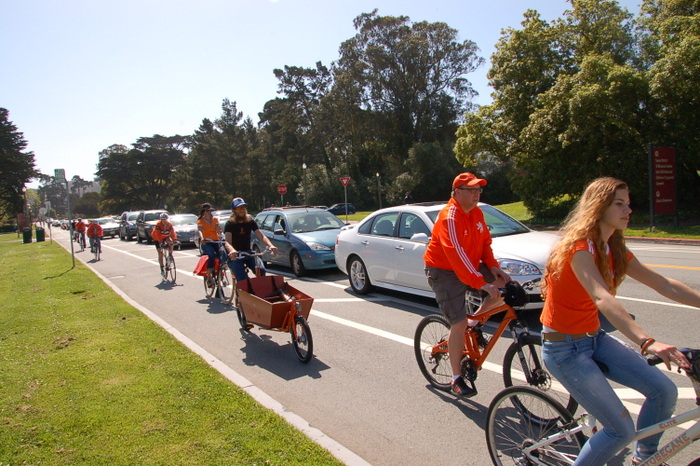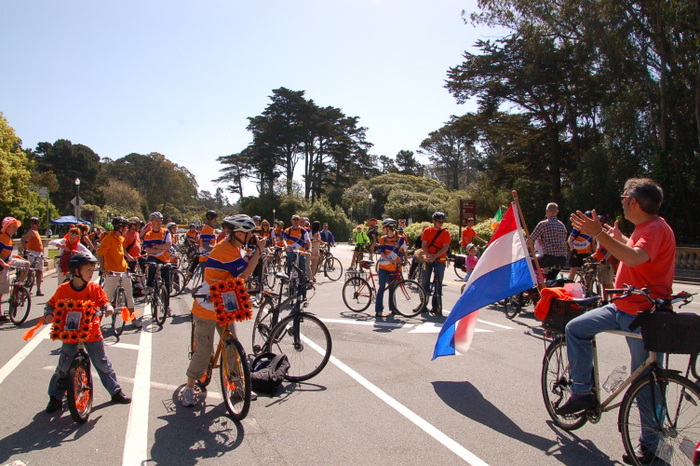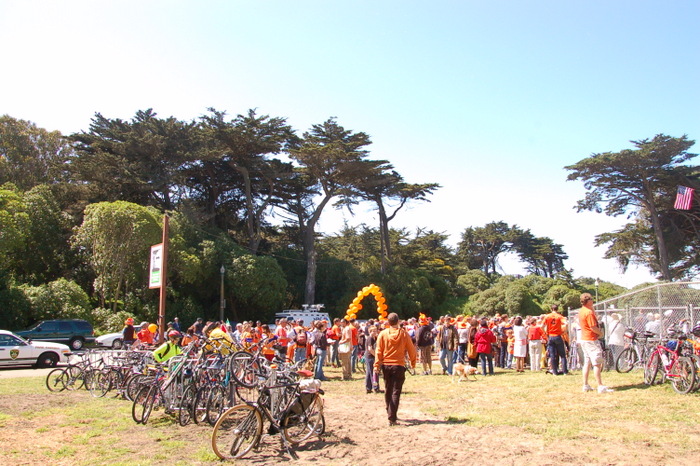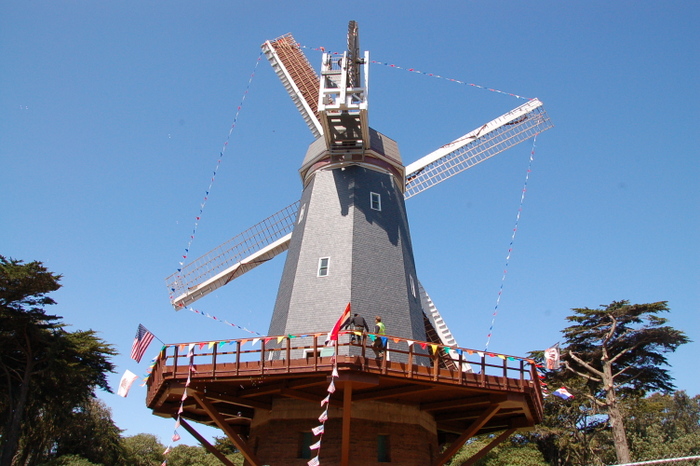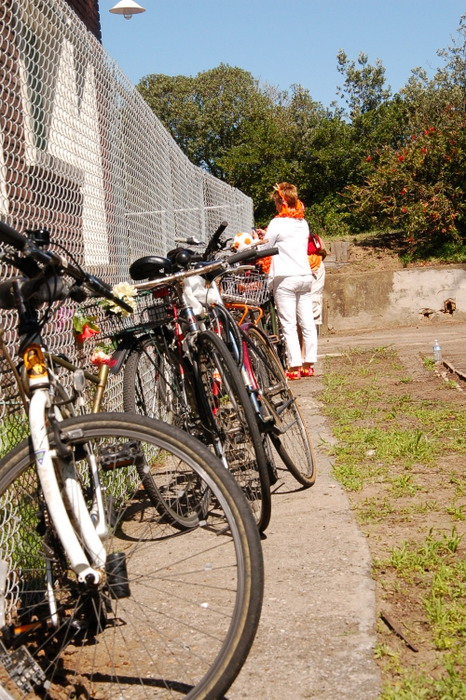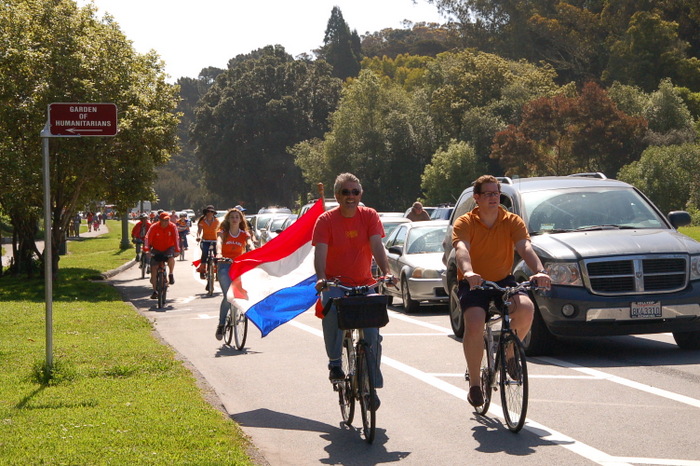
This year's celebration of the Dutch Queen's Day in San Francisco was a bit special.
When the event's 100-or-so celebrants traversed the city by bike in the second annual "Market-to-Mill" ride (Market Street to the Dutch windmill in Golden Gate Park, a.k.a the Bay to Beach route), the orange-clad caravan traveled through San Francisco's first bicycle lanes designed with a Dutch standard of safety in mind.
Bart van Bolhuis, Consulate General of the Netherlands, told Streetsblog that riding the new parking-protected bike lanes on John F. Kennedy Drive felt like cycling in his home country. "Especially biking with 100 people dressed up in orange," he added.
A key feature of the JFK bikeway, Bolhuis pointed out, is the buffer area which separates bicycle riders from the door zone and provides space for people getting in and out of their cars. Most conventional bike lanes in San Francisco place riders in the path of opening car doors on one side and passing cars on the other. Drivers also make regular incursions into the bike lane to maneuver into parking spaces or double park. That creates an obstacle course that's too stressful for most people to ride in. By placing bicyclists to the right of parked cars, JFK is the first street in San Francisco designed to accommodate car parking while eliminating those hazards.
"People have to feel safe on their bikes, and these kinds of bike lanes are very helpful," said Bolhuis. "The most important thing is that it will create safety, and the feeling of safety, for other kinds of bicyclists as well -- mothers with children, elderly people -- and that's something we have to establish in this city, not only for the brave, but also for the people who want to bike in nature, or to school."
Transportation planners in the Netherlands have been refining separated bikeway designs since they ramped up their implementation about 40 years ago. Today, bike trips account for 37 percent of all trips in Amsterdam (58 percent in the city center), and just about everyone who's able to ride does so regularly.
Bicycling in San Francisco could some day feel as safe and normal as it does in the Netherlands if the city continues providing more protected bike lanes and traffic-calmed streets in the coming years. The SFMTA consulted Dutch bicycle planners last September to get ideas for improving three of San Francisco's most important bicycling corridors (the JFK project wasn't included). The agency is currently developing plans to administer some of those recommendations, the first of which will be on the Wiggle.
"San Francisco, more than most American cities, has the potential to model the successes of places such as the Netherlands and Denmark, where they have invested in great bicycling infrastructure for people ages 8 to 80, and where it's paying off with healthier, happier people traveling more easily and safely," said San Francisco Bicycle Coalition Executive Director Leah Shahum, who spent an eight-month sabbatical living in Amsterdam. "With our temperate climate, compact city layout, and strong biking culture, San Francisco is poised to move in this direction. The new, physically separated bikeways on JFK Drive are an example of how San Francisco is committing itself to being a great bicycling city for people of all ages and backgrounds, not just the hearty few."
"This really is about ensuring greater access on our streets for San Francisco's diverse population, who is biking more and more," she added.
The JFK bikeway, which Shahum noted could be looked to as a model for planners in other cities in the Bikes Belong Foundation's Green Lane Project, seems to be quickly growing on San Franciscans and park visitors and has had a profound traffic-calming effect. More and more people -- young and old, experienced riders and casual riders -- can be seen using the lanes every day. As was the case in other American cities that have implemented protected bike lanes, drivers also appear to have grown accustomed to floating parking lanes, and the bike lanes are rarely, if ever, blocked by cars anymore.
Bolhuis did note that some visitors on JFK on a busy Saturday morning, like tour bus drivers and passengers, may still "have to be educated a bit" to keep them from parking in the buffer area and help them to be aware when crossing the bike lane. Still, he said, riding the lanes "feels really good."


